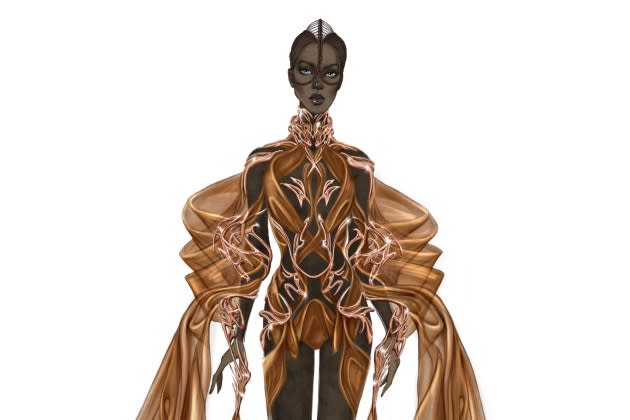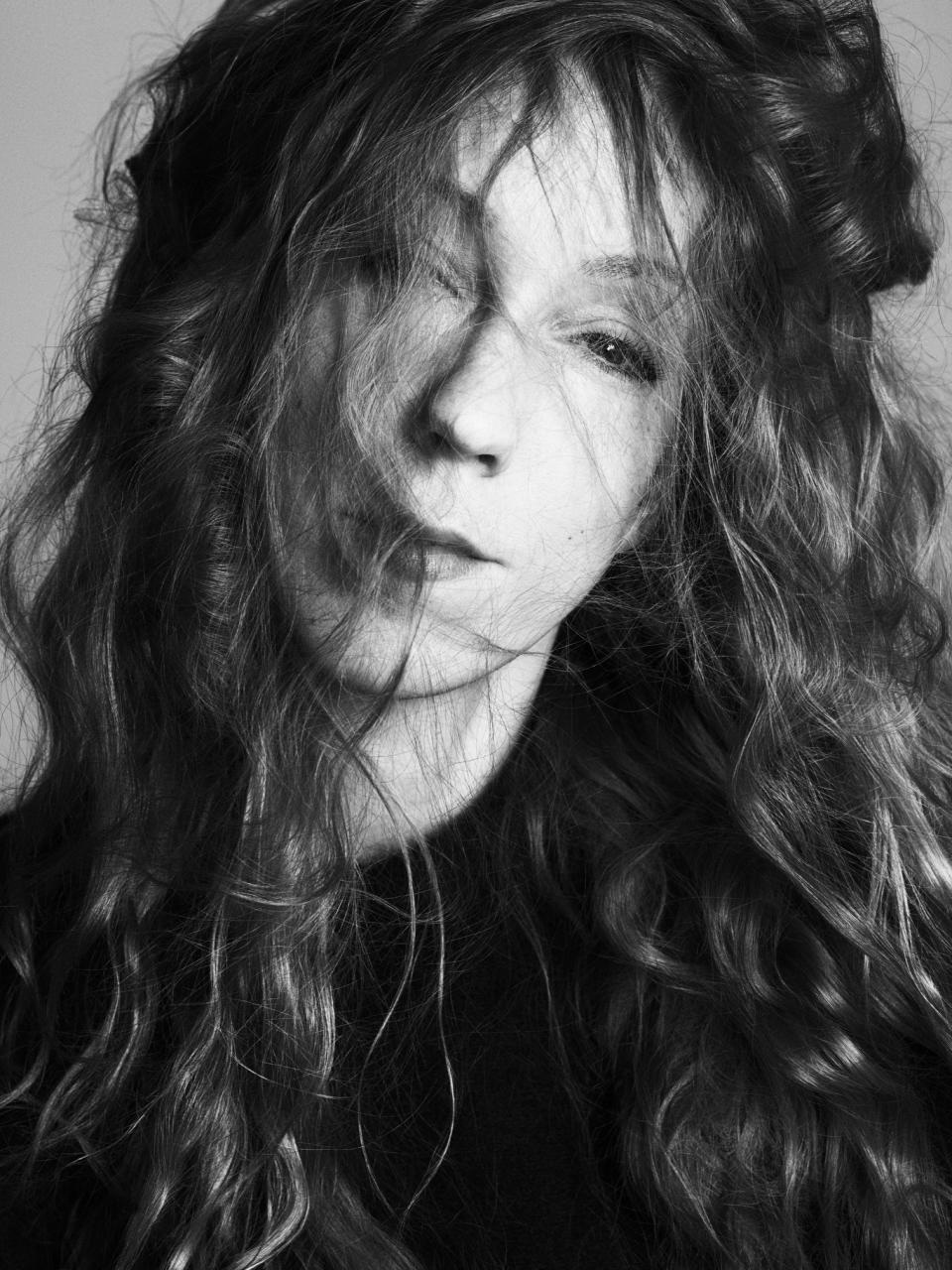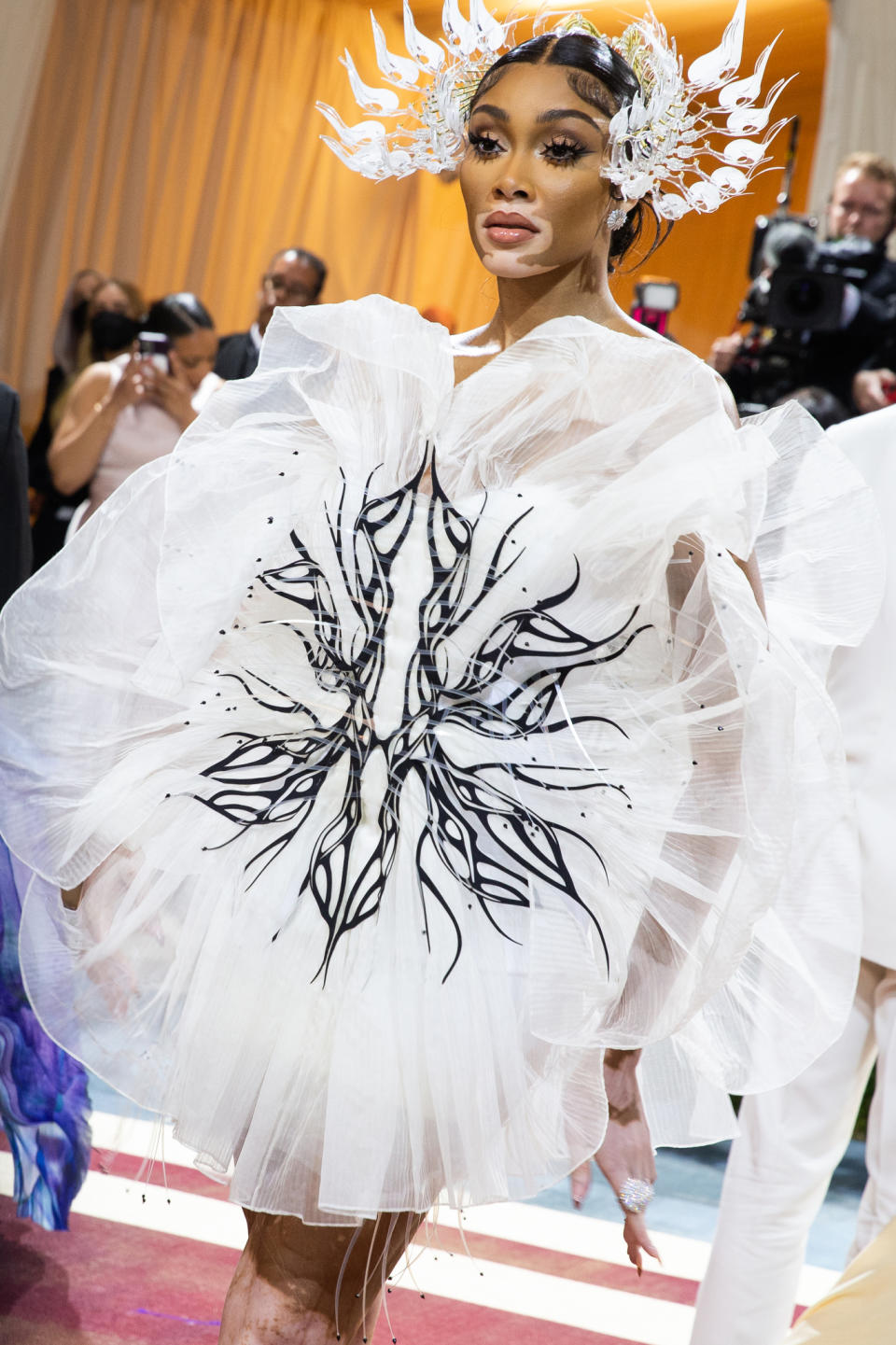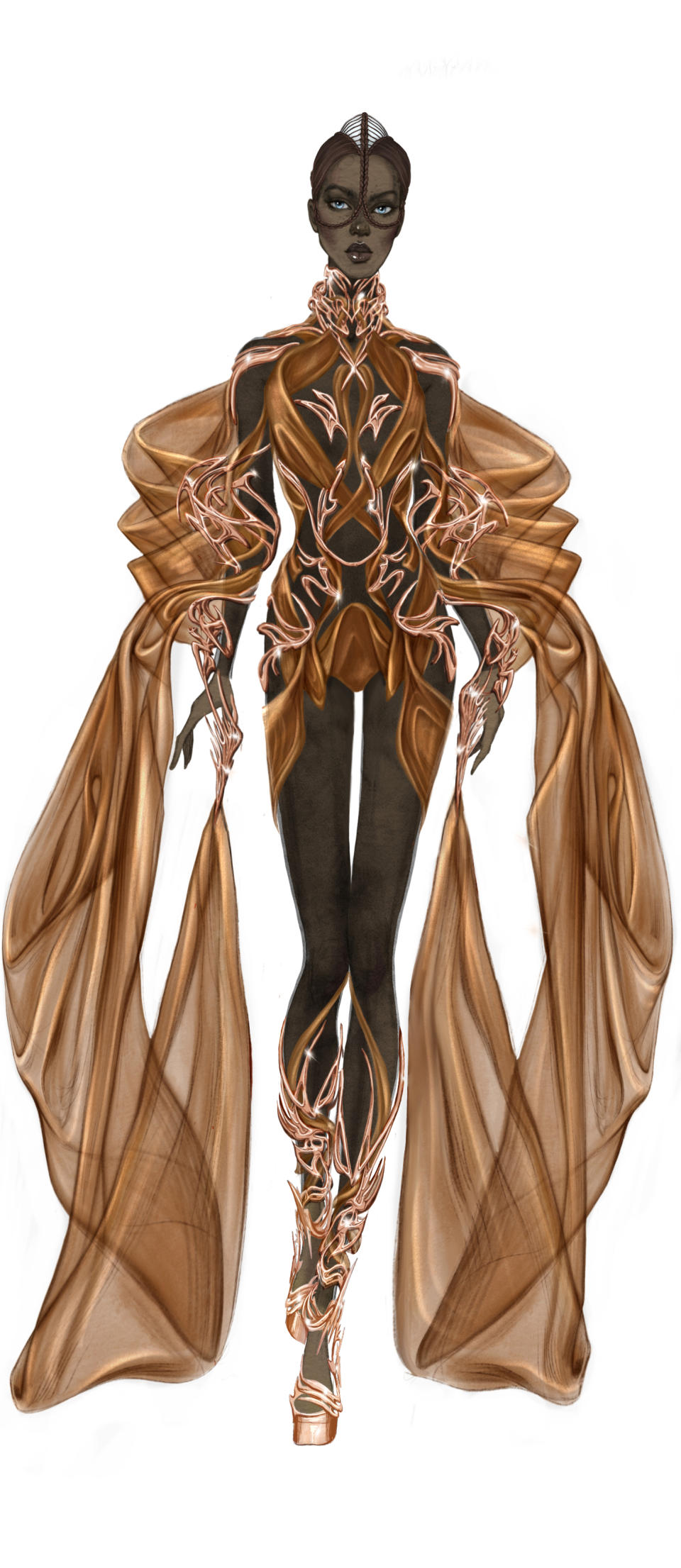Iris van Herpen on Couture, the Metaverse and Making Dresses From Algae
- Oops!Something went wrong.Please try again later.

When Iris van Herpen opened her couture house in 2007 after an internship at Alexander McQueen, she saw it as an opportunity to elaborate on several centuries of savoir-faire — and propel it into the future with imagination and technological wizardry.
“A lot of things I do are based on intuition, and my heart is with haute couture — it always has been,” she said in an interview ahead of her 15th-anniversary show on July 4 in Paris. “Fashion to me is a form of art, and couture is really embodying the craftsmanship and the artistic side of fashion.
More from WWD
“Even though we are in 2022, people value craftsmanship, and I don’t think that will perish,” she continued. “I really believe in the value of couture, also for the future of fashion. It’s a place where there is time and space for the development of new techniques, and new materials. And within the modern challenges of evolving sustainability within fashion, couture can also play a very important role.”
For example, Van Herpen said her team works for three to four months before each collection to devise new sustainable materials, and these technologies are made available to other ready-to-wear brands.
It should come as no surprise that her show won’t be a retrospective at all. “Focus on the future,” said Van Herpen, one of fashion’s most inventive and meticulous practitioners, employing cutting-edge technologies to realize her ethereal, otherworldly clothes, from laser cutting to electromagnetic weaving.
Indeed, she might be the industry’s most metaverse-ready designer since she’s been making 3D-printed garments since 2009, her programming awaiting the right digital devices and CGI capabilities to experience them in mixed reality.

Courtesy of Iris Van Herpen
Some guests at her fall 2022 couture show will don Microsoft HoloLens devices, while others can see augmented reality with their smartphones.
While the Dutch designer dabbled in rtw for a few seasons, culminating with the 2014 ANDAM Fashion Award, she returned her focus to haute couture since her painstaking techniques could not translate easily into rtw. “It was really too restrictive to work with standardized techniques,” she explained.
In a wide-ranging interview, Van Herpen reflected on her muses; her obsession with modern craft, science and architecture, and how her background as a dancer goes to the core of her work — creating dresses that move like no one else’s.
WWD: Did you have clients right from the beginning? Who are they?
Iris van Herpen: In the very early years, the clients were very related to art buyers — acquiring a piece of mine as a form of art. Some would wear them; some would acquire them to put in their homes. Museums were also an important clientele at the beginning. But now the clientele has grown and become more diverse. We still work a lot with museums, but our main clientele is actually the couture buyers who acquire a custom piece from us.
The U.S. and Asia are the biggest regions for us, and we have some European clients as well. We have clients that acquire every year, and some less often. We make approximately 40 to 50 looks every year, not including the looks we make for VIPs.
WWD: Do you have a role model, mentor or hero in terms of haute couture?
I.V.H.: I did my internship with (Lee Alexander) McQueen, and that has been one of the most inspiring moments. It really opened my eyes toward craftsmanship, the combination of techniques, the persistence in his vision. He had a strong identity — you could always recognize a McQueen for the craftsmanship and the combination of design elements. It’s so rare and so valuable. I’ve been so inspired by his vision, and I still am.
WWD: Haute couture is perceived by many people as a glorious but loss-making advertising campaign for perfume, but you don’t even have one. How is your business performing?
I.V.H.: It’s true, we only do haute couture. It all survives thanks to our clientele. We are independent, as well, and I’m very proud of that, and that we found a healthy balance between art and commerce. It’s a growing business, although I admit it was challenging during the pandemic, of course, because of the relationship that we have with our clients, the personal interaction, and the fittings. We managed to do some fittings through Zoom, but now we can actually invite our clients again to the atelier in Amsterdam and to Paris. So it’s actually a very nice moment because everything is opening up. We have a lot of client requests, actually more than we can handle.
WWD: How much of the haute couture business is weddings?
I.V.H.: It’s a pretty small part, but we definitely do a few each year. As you can imagine, the bridal looks require the most time. So there is also a maximum capacity that we have on bridal orders.
WWD: What have been some of the most memorable and impactful weddings and events you worked on?
I.V.H.: The weddings we have worked on are quite private. Most of the time we are asked not to put photos out there because people prefer more intimate events.
By contrast, the looks we do for VIPs and the custom orders we do for them, they are quite public. The custom looks for VIPs are most of the time acquired, but sometimes we tailor an existing piece or a runway piece. That’s mostly a press effort.
WWD: Do you have a favorite VIP dressing moment, or moments?
I.V.H.: I have my own muses. One of the women I’ve been working with for a long time now is Björk. She also has been one of the very first ones to acquire a piece. I’m a very big admirer of her style, her vision, her multidisciplinary approach.

Lexie Moreland/WWD
I’ve also really enjoyed working with Lady Gaga. She is also someone who puts so much energy and dedication into her art. The Met Gala has also been a very special moment for me, like this year, and last year, when we worked on multiple looks at the same time for VIPs.
WWD: I notice you have a boutique section on your website selling belts and scarves. Is this something new?
I.V.H.: We’ve had them for a long time already. These are permanent accessories that we have on the website, and it’s really nice for a larger group of people to be able to access some accessories from IVH. But we keep it small and we don’t do seasons, because the focus is really on the couture.
WWD: Do you have a bestselling dress of all time?
I.V.H.: It’s more the techniques. Interestingly enough, most of the clients who come to us will show one or two looks that are their favorites, and then most of the time I customize a design based on that technique. One technique that is an all-time favorite is from the Syntopia collection, which had all sorts of wave patterns, outlines on top of cutout silk layers, which creates a very different movement in the materiality. Most of the clients who come to us are fascinated by the movements of the garments, because they behave so differently on the body than looks made of a plain silk, for example.
WWD: When did you make your first 3D-printed garment? How did you even hear about it?
I.V.H.: I started working on them in 2009. I was collaborating with two architects who were using 3D printing for the model making. And then I started collaborating with a digital artist and architect, Daniel Widrig. He wrote the files for my first 3D-printed dress that was shown in 2010 in my Crystallization collection.
WWD: I understand you’ve used silicone, iron filings and resin. What are some of the most unusual and difficult materials and techniques you’ve used?

Courtesy of Iris Van Herpen
I.V.H.: The glass dress we did in collaboration with Bernd Weinmayer. It was fully blown from hollow glass, and it took four to five months to make. The development process before that was even longer as the dress is filled with plasma, which means it’s interactive: When you touch it, the colors suddenly change. That one was very challenging.
With every collection, we dive into a new process. There are a lot of failures, but also a lot of beautiful success. For the new collection, we have been collaborating with a Dutch duo on a new 3D-printing technique that is fully sustainable using the shells of cacao beans, and also algae. The only other material that goes into the printing process is a bit of glucose to make it more durable. It has been very challenging in order to get the softness and the delicacy into the 3D printing that is required for haute couture.
WWD: How much does technology drive your couture, and fuel your imagination?
I.V.H.: When I design, I’m actually very focused on movement. The technology itself is actually not a driving force. Neither is craftsmanship, strangely enough, and this is a very strange quote coming from my mouth. (Laughs.) But when I think about the essence of my work, it’s actually my background in dance. Dance and art are the forces of my vision, and it’s the movement and transformation in relationship to the body that really excites me. And in order to push the boundaries of movement and transformation of the body, this is where technology and craftsmanship come in: These are my tools in order to really move beyond the physical constraints that I’m facing on a daily basis. The laws of physics are what I have to deal with, but my goal is always to try and push the limits of those laws in the materiality that I work with. That’s where I’m using technology and craftsmanship and combining these two to be able to push those boundaries. Technology itself really has never been a goal for me.
WWD: Your IRL designs seem prescient of the metaverse. How might the arrival of the metaverse affect your creative approach and your business?
I.V.H.: We are exploring it. The last three years, we’ve been collaborating on a project to be launched later this year, and which will also be part of a mixed reality experience that will be shown in our exhibition in Paris (slated for fall 2023 at the Musée des Arts Décoratifs). And we are collaborating for our upcoming show this Monday, which will be a physical show extended with mixed reality as well.
My reason for waiting (to enter the metaverse) a little bit is actually more because of the devices themselves. If you can imagine my designs and their level of intricacy, I need the right devices in order to express my vision, and we are at the horizon of that moment. We are working with Microsoft with their newest HoloLenses, and they are in a very good quality of showing the intricacy of my designs.
There’s also the Epic game engines that we can work in now. They are such high fidelity, and such high polygon counts and level of quality that I can really express the work in a way that is close to the couture. That is really my goal. Again, for me, it’s not about the tools themselves, but it’s about expressing the vision of of my designs and the craftsmanship.
I really believe that digital couture can add a beautiful additional layer to physical couture, and they can relate to each other or they can be experienced simultaneously. And I don’t really believe in choosing one or the other. I’m all about mixed reality — blending the physical with the digital — and that’s also why I chose to have both in the upcoming show.
People will understand the concepts within the collection even more.
WWD: What do you hope to accomplish in haute couture the next 15 years?
I.V.H.: There will be so much changing. I am very excited about a multidisciplinary approach. My core is fashion and couture, with art, science and technology also playing an important part. I feel this is accelerating within my own process.
Architecture is also a big part of my world and my inspiration. I’ve already done a little bit with architecture, but I want to do more, especially within the metaverse, which offers new land for architecture as well as fashion. I feel I can fuse those two together.
I think fashion is in a transformation itself. Of course, I can’t predict what’s going to happen. But the fact that it is transforming and changing is very positive on multiple levels. It’s becoming more democratic, more diverse. There are more important messages within the collections, also politically, and I think all of these movements are very positive for the general consciousness of what fashion means as an industry.
And then one of the most important topics is sustainability. Even though it goes too slow, a lot of positive things are happening. This is a key focus point for me in my own development, but also for inspiring young generations on how much we can change, and how our decisions, for example, between rtw and couture, can make a real difference. The new generation is still focused on rtw, but there is a business in couture as well, and it’s a very sustainable one. So I really hope there is a growing hybrid possible that has the advantages of both couture and rtw. This is actually where the metaverse also comes in.
One very important subject to tackle first in sustainability is overproduction. As we all know, 40 to 45 percent of all the garments that are being made are not being bought. Meanwhile, couture is an example of how customers collect, and therefore only what is wanted is produced. There are promising conversations going on now about brands releasing their collections digitally first — and finding out what their customers actually want — before making their physical production. That could help tackle the big problem of overproduction. So I think the metaverse and digital fashion can actually have a very positive influence on sustainability as well. I just want to keep on exploring these new possibilities and also to be an inspiration for a new system and a new way of production in fashion.
FOR MORE, SEE:
Iris van Herpen’s Skydiver Gown Is the Pinnacle of High Fashion
How a Creative Agency Is Helping Luxury Brands to Understand the Metaverse
Balenciaga, Olivier Rousteing for Jean Paul Gaultier Among Highlights of All-physical Paris Couture
Sign up for WWD's Newsletter. For the latest news, follow us on Twitter, Facebook, and Instagram.

